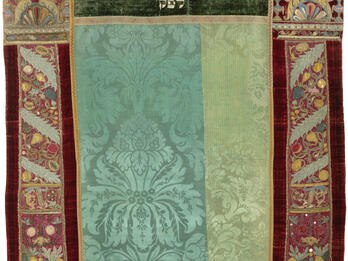Bylaws
The Tedeschi (German) Congregation of Venice
1541
The Parnassim of the Kehillat Kodesh dei Tedeschi (Ashkenaz), Moise di Tardiola and . . . . [blank] give full authority to Rabbi Azriel to make taqqanot (ordinances or statutes):
- All members must pray in the evening, morning, and afternoon in the Scola dei Tedeschi, and elsewhere only under special circumstances. If they are absent for three…
Creator Bio
The Tedeschi (German) Congregation of Venice
Following a short-lived presence in Venice at the end of the fourteenth century, Jews began to settle in the city in the early sixteenth century. Despite much opposition, in 1516 a compromise was reached allowing Jews to live on the Ghetto Nuovo, an island that had previously housed a foundry and was separated from the rest of the city, its gates locked at night. The Venetian authorities referred to the native Jews as Tedeschi, meaning “Germans,” because many were of German origin, although their families had lived in Italy for generations. These Jews engaged in moneylending and sold secondhand clothes, household items, and rags. In 1528, the German Jews built their first synagogue, the Scuola Grande, a small structure, decorated modestly given the community’s financial constraints. It has been restored many times over the centuries. In 1531, the community constructed another synagogue, the Scuola Canton. In addition to the German Jews, Sephardic and Italian Jewish communities also existed in Venice. The three communities remained independent, and the German Jews occupied the middle rank in the hierarchy among them.
Related Guide
Jews on the Move: Early Modern Jewish Migration
The geography of Jewish settlement shifted dramatically in the sixteenth and seventeenth centuries.
Related Guide
Early Modern Italy: Where East and West Meet
Ashkenazim, Sephardim, and Marranos encountered each other in Italian cities, developing community structures that later influenced Jewish communal organization throughout the western world.
Related Guide
Community, Congregation, and Self-Government
The early modern period witnessed flourishing Jewish self-governance across the diaspora, as economic utility to host nations enabled unprecedented communal autonomy.
You may also like
Haskamot kehal ha-ashkenazim bi-Tsfat (The Regulations of the Ashkenazic Community in Safed)
Rulings
Takkanot (Regulations)
Takkanot (Regulations)



